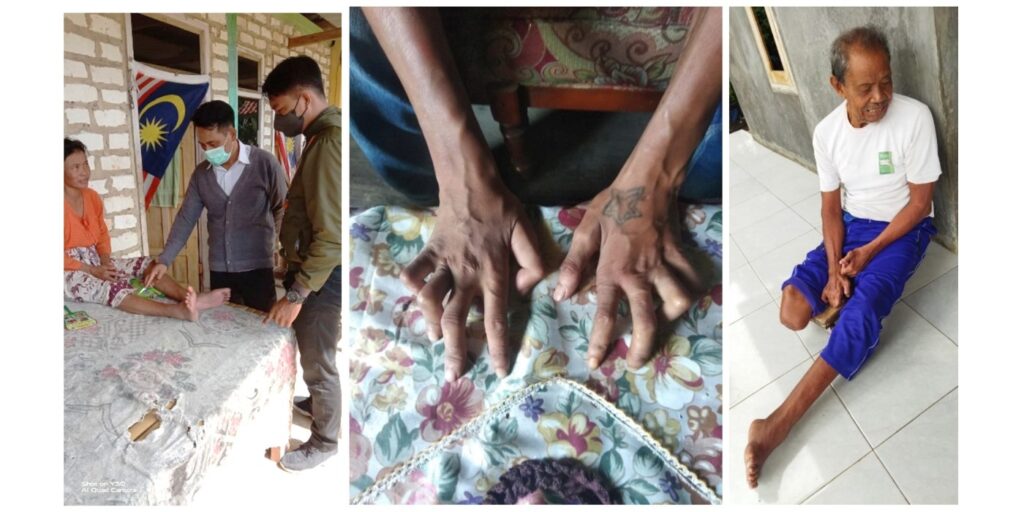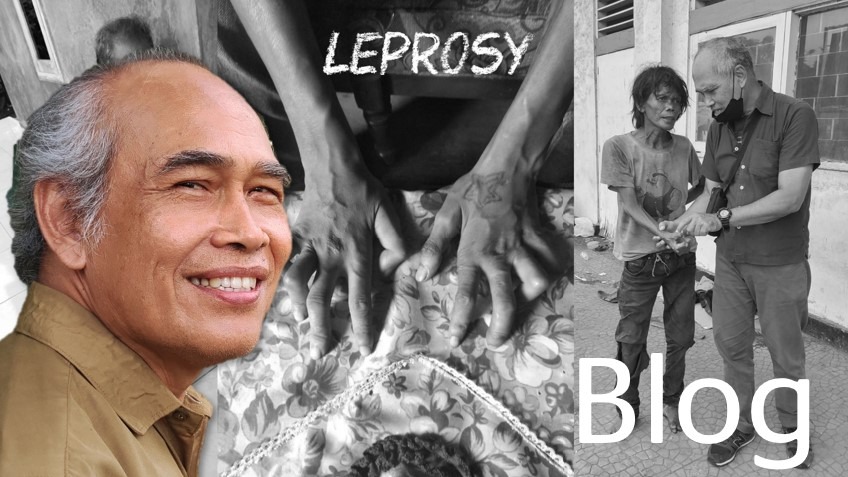Leprosy is not our of the world…
After his retirement as a medical doctor, Johny Sulistio from Indonesia decided to work with cows to regain some purpose in life, during which he encountered a leprosy patient with a late deformity. Because of stigma, they are late to seek diagnosis and treatment. This and their ostracization pains him. To address this, he wants to build the “House of Ketupat”, to provide a homely joyful environment where health professionals, and community members including people living with leprosy care for and empower each other.
by Johny Sulistio
“Those who have a ‘why’ to live, can bear with almost any ‘how’.” – Viktor Emil Frankl
I was once a successful medical doctor in Indonesia. As an occupational health physician, I served the employees of a large multinational corporation. The success had gotten to my head, and I walked through life full of arrogance, finding happiness in the company of any woman who crossed my path. Little did I understand the storm of consequences that would eventually send me off into the night. My wife kicked me out screaming, “You are an animal. A bull that sleeps around with any woman at your workplace!” Those words scarred my heart.
A Journey of Solitude
What followed was depression, loneliness, and guilt. Two years later I retired from the consumer goods corporation after 17 years of working. I felt no purpose. I didn’t want to work with people anymore. 6 months passed wandering in loneliness until I came across the movie, “Temple Grandin”, a true story about an autistic girl who overcomes her struggles to become an expert in animal husbandry. I had found a path to dissociate from human health and work with animals instead. I studied artificial insemination and was posted to an island called Savannah Village to introduce this technology.
Triumph Amidst Doubt
It was hard to convince villagers of this new intervention. I almost gave up until I got my first client after three months. Once the farmers saw the results, more started pouring in. The farmers would be amazed and celebrate when they saw a white Brahman calf stand on its feet and start suckling its red-brown coloured mother’s teat. This grew my confidence to live cheerfully among the cows and farmers in Savannah. I helped deliver calves, naturally and by c-section which by the way is much easier on a cow than on a human, because cows don’t need any general anaesthesia.
The Encounter
During one of my visits to a client, fate intervened in the form of an encounter with an elderly man, his body marred by years of leprosy’s cruel deformity. Weakly the man said: “I’ve tried different types of medication, but everything was in vain. I live at and drink from the pond where cows drink. The cattle owner gives me aid occasionally”.
This was my turning point to start considering working with humans again, especially leprosy patients. My initial idea was to provide services within the housing complex of people with leprosy. This idea brought me back to East Java to work with a leprosy-focused NGO. I was involved in a clinical trial of a single-dose antibiotic for those who had contact with leprosy.

Bridging Through Cows
During this work, I came closer to a leprosy patient. I used my profession as a cow inseminator to present myself in a non-clinical and friendlier manner. I gained trust because our discussion was about cows. These discussions developed mutual trust. The neighbours of the person living with leprosy were interested in the cows too and disregarded my beneficiary’s condition. It appeared as if there was no stigma among them. They just sat in a circle to discuss and listen to my explanation of cows’ better feeding and nutrition. We agreed to collect fish waste together from the coastal fishermen as a supplement to the cow feeds.
The Healing Power of Running
I have a habit of running, which was initially an escape mechanism regarding my problems and desperation. I do mean literally running on my feet. Running provides me a contemplative moment to re-think my mistakes and how to recover from them. But I always found that meeting people gives me the strength to live more purposefully. And the moments of discussing and working together with persons living with leprosy and their neighbours were most significant in my life. I know that this neglected disease will not disappear in a short period of time, just like a marathon, it needs patience and persistent effort to overcome it, especially to tackle the stigma and discrimination. I had finally come to my dream: The house of Ketupat, a villa where social workers, medical doctors, and leprosy patients can live together for the betterment of leprosy patients.
A Vision for Change
The HOUSE of KETUPAT provides a homely environment for care and medication. We plan to involve members of the surrounding community to volunteer. This would help in reducing stigma against leprosy patients and all would be empowered by being engaged in creative, cooperative, and income-generating activities. It will serve as a model to create a world where people affected by leprosy are empowered to lead, govern, and contribute to a society that values their unique perspectives, abilities, and inherent dignity, fostering inclusivity, equality, and collective well-being.
Do you, like Johny, want to start an impact making organisation?
Then the kanthari Impact leadership course could be the best place for you.
Check out the following website and apply to become a participant in the scholarship based course that starts in April:
https://www.kanthari.org/admissions/



